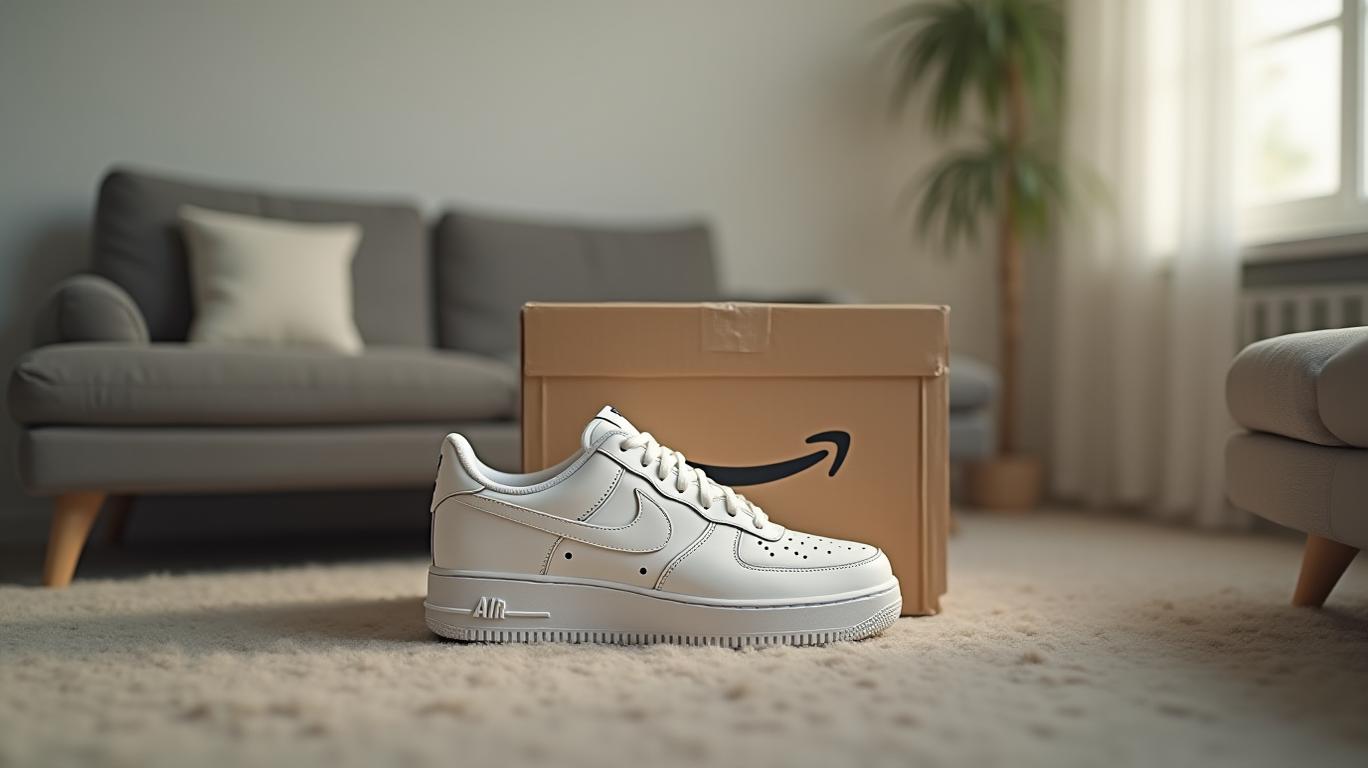Nike's Pricing Power and Amazon Comeback Signal Resilience in a Tariff-Torn Market
The global footwear and apparel industry is navigating a perfect storm of tariff volatility, shifting consumer preferences, and supply chain upheaval. Amid this chaos,
(NKE) has positioned itself as a strategic leader, leveraging targeted price adjustments and a bold return to Amazon to defend its market dominance. For investors, this combination of tactical moves and long-term vision presents a compelling opportunity to capitalize on a brand primed for recovery.
The Tariff Tightrope: How Nike is Adapting to Rising Costs
The U.S.-China tariff war has transformed into a high-stakes game of cost containment for global brands. Nike’s decision to raise prices on select products—$5 on shoes between $100-$150 and $10 on premium styles—reflects a nuanced strategy to offset the 30% tariffs on Chinese imports while protecting affordability for budget-conscious buyers. By exempting children’s products and the iconic Air Force 1 ($115), Nike prioritizes retention of price-sensitive consumers during critical back-to-school periods.
This selective pricing approach aims to shield profit margins without triggering widespread consumer backlash. Analysts estimate tariffs could have cut Nike’s earnings by 95% without such measures. The company’s 2025 Q1 results, though still challenged by inventory overhang, show a narrowing gap between cost pressures and revenue resilience—a positive sign for investors.
The Amazon Pivot: Reclaiming Market Share and Brand Control
Nike’s return to Amazon after a six-year hiatus is a masterstroke in omnichannel strategy. With 180 million Prime members, Amazon’s ecosystem offers unparalleled reach to counter competitors like Hoka and On Running, which surged during Nike’s absence. By directly managing listings and deploying Amazon’s anti-counterfeit tools (e.g., Project Zero), Nike regains control over pricing, branding, and customer experience.
The move also addresses a glaring vulnerability: unauthorized sellers generated $780M in uncontrolled sales between 2023-2024. Re-entering Amazon as a first-party seller allows Nike to:
- Suppress counterfeiters by leveraging Amazon’s CCU and Brand Registry.
- Compete with ultra-cheap platforms like Shein and Temu, now struggling under the eliminated $800 de minimis exemption.
- Access data-driven insights to refine inventory and marketing strategies.
This pivot aligns with CEO Elliott Hill’s shift from an over-reliant DTC model to a balanced omnichannel approach. Analysts project Amazon sales could add $500M annually to Nike’s top line by 2026—a lifeline in a market where every percentage point of share lost equates to hundreds of millions in lost revenue.
Risks on the Horizon: Tariff Volatility and Consumer Pushback
Investors must weigh these opportunities against clear risks:
1. Tariff Escalation: The 90-day tariff reduction (to 30% from 145%) expires in July 2025, risking renewed cost spikes.
2. Price Sensitivity: Higher prices could deter buyers if inflation remains elevated, though Nike’s brand loyalty offers a buffer.
3. Supply Chain Rigidities: Over 50% of footwear production remains in tariff-prone Vietnam, leaving margins exposed to geopolitical shifts.
Why This is a Buy Signal: The Case for Nike’s Long-Term Dominance
Despite these risks, three factors make Nike a compelling investment:
1. Brand Equity: The “Just Do It” legacy retains unparalleled emotional resonance, with 65% of consumers viewing Nike as the top sportswear innovator.
2. Strategic Agility: The Amazon return and targeted pricing show a company capable of pivoting in turbulent markets—a rarity among legacy brands.
3. Valuation: At 22x forward P/E, Nike trades at a 30% discount to its five-year average, despite a projected 8% revenue rebound by 2026.
Investment Recommendation: A Multi-Year Play on Resilience
Buy with a 12-18 month horizon, targeting a price target of $150 (25% upside from current levels). Key catalysts include:
- Tariff Resolution: A U.S.-China trade deal extending the 30% tariff cap.
- Amazon Sales Surge: Q3 2025 results showing Prime channel growth exceeding 20%.
- Innovation Pipeline: The rollout of new franchises like Sabrina and Alphafly, which could reinvigorate top-line growth.
Risks to Avoid: Overpaying at current momentum-driven rallies; hedge with a 15% stop-loss below $110.
Nike’s blend of strategic pricing discipline, Amazon’s e-commerce power, and enduring brand strength positions it to outperform peers in this tariff-driven era. For investors willing to ride the volatility, this is a rare opportunity to own a sporting goods titan rewriting its playbook for survival—and dominance—in the new global economy.

Comments
No comments yet